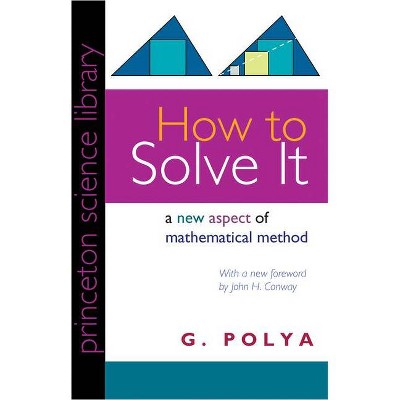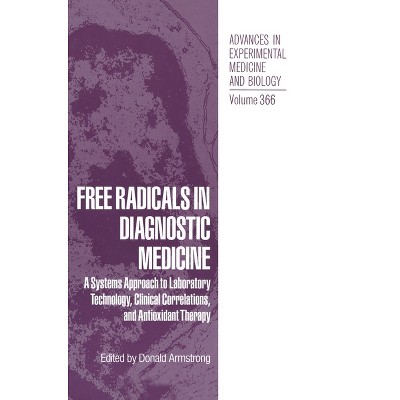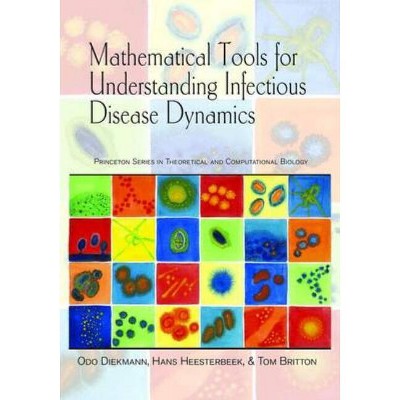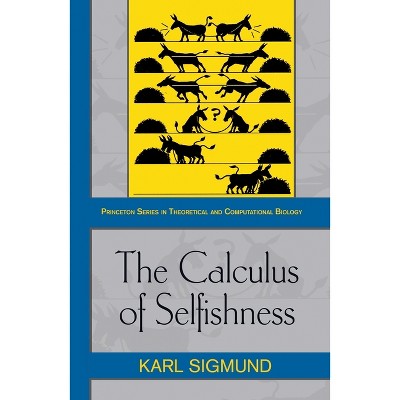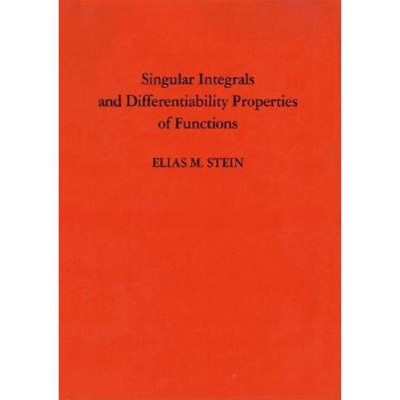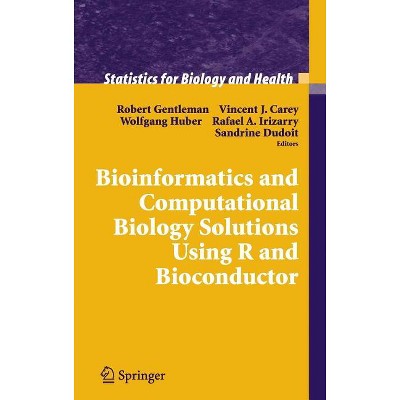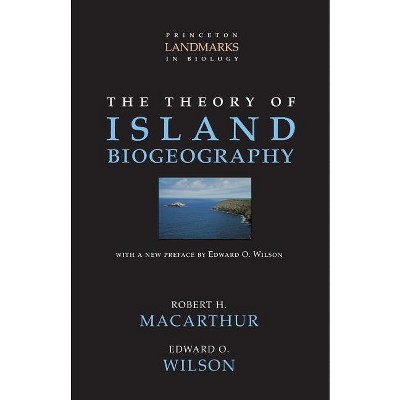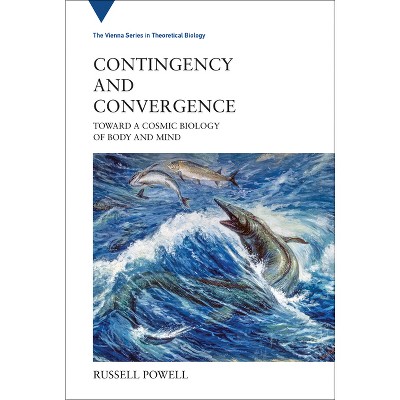Sponsored

Mathematical Properties of Population-Genetic Statistics - (Princeton Theoretical and Computational Biology) by Noah A Rosenberg
$61.75Save $3.25 (5% off)
In Stock
Eligible for registries and wish lists
Sponsored
About this item
Highlights
- A powerful new approach to interpreting population-genetic data in evolution and ecology Population genetics uses statistical analysis to catalog genetic variation among populations and species.
- About the Author: Noah A. Rosenberg is Professor of Biology at Stanford University, where he holds the Stanford Professorship in Population Genetics and Society.
- 184 Pages
- Science, Life Sciences
- Series Name: Princeton Theoretical and Computational Biology
Description
About the Book
"A powerful new approach to interpreting population-genetic data in evolution and ecologyPopulation genetics uses statistical analysis to catalog genetic variation among populations and species. Summary statistics computed from allele frequencies-mathematical functions that measure features of genetic similarity and diversity-are key to this global effort. Yet despite their widespread use in evolutionary biology, ecology, and conservation biology, their mathematical properties have largely been overlooked. This book shows how to use the mathematical bounds on summary statistics to make better interpretations of population-genetic data.Noah Rosenberg discusses how the behavior of these statistics depends not only on the biology of the populations they seek to describe but also on the mathematical properties of the functions used to compute them, properties that produce constraints on the values of the statistics and influence their interpretation. Focusing on the concept of homozygosity-a quadratic function of allele frequencies in a population-he demonstrates how to account for mathematical constraints when measuring genetic similarity and diversity. Rosenberg illustrates the results using examples from empirical data and shares strategies that readers can use to apply this mathematical perspective to different kinds of summary statistics, including those for measuring biodiversity in ecological communities.Drawing inspiration from Charles Darwin, who marveled at evolution's "endless forms most beautiful and most wonderful," this book presents a groundbreaking approach to the study of genetic variation. It is sure to stimulate new research in population biology and deeper thinking about the meaning and interpretation of essential measurements of the world's genomes"--Book Synopsis
A powerful new approach to interpreting population-genetic data in evolution and ecology
Population genetics uses statistical analysis to catalog genetic variation among populations and species. Summary statistics computed from allele frequencies--mathematical functions that measure features of genetic similarity and diversity--are key to this global effort. Yet despite their widespread use in evolutionary biology, ecology, and conservation biology, their mathematical properties have largely been overlooked. This book shows how to use the mathematical bounds on summary statistics to make better interpretations of population-genetic data. Noah Rosenberg discusses how the behavior of these statistics depends not only on the biology of the populations they seek to describe but also on the mathematical properties of the functions used to compute them, properties that produce constraints on the values of the statistics and influence their interpretation. Focusing on the concept of homozygosity--a quadratic function of allele frequencies in a population--he demonstrates how to account for mathematical constraints when measuring genetic similarity and diversity. Rosenberg illustrates the results using examples from empirical data and shares strategies that readers can use to apply this mathematical perspective to different kinds of summary statistics, including those for measuring biodiversity in ecological communities. Drawing inspiration from Charles Darwin, who marveled at evolution's "endless forms most beautiful and most wonderful," this book presents a groundbreaking approach to the study of genetic variation. It is sure to stimulate new research in population biology and deeper thinking about the meaning and interpretation of essential measurements of the world's genomes.About the Author
Noah A. Rosenberg is Professor of Biology at Stanford University, where he holds the Stanford Professorship in Population Genetics and Society.Dimensions (Overall): 10.0 Inches (H) x 7.0 Inches (W) x .4 Inches (D)
Weight: .73 Pounds
Suggested Age: 22 Years and Up
Series Title: Princeton Theoretical and Computational Biology
Sub-Genre: Life Sciences
Genre: Science
Number of Pages: 184
Publisher: Princeton University Press
Theme: Biology
Format: Paperback
Author: Noah A Rosenberg
Language: English
Street Date: May 20, 2025
TCIN: 92467384
UPC: 9780691168333
Item Number (DPCI): 247-29-7983
Origin: Made in the USA or Imported
If the item details aren’t accurate or complete, we want to know about it.
Shipping details
Estimated ship dimensions: 0.4 inches length x 7 inches width x 10 inches height
Estimated ship weight: 0.73 pounds
We regret that this item cannot be shipped to PO Boxes.
This item cannot be shipped to the following locations: American Samoa (see also separate entry under AS), Guam (see also separate entry under GU), Northern Mariana Islands, Puerto Rico (see also separate entry under PR), United States Minor Outlying Islands, Virgin Islands, U.S., APO/FPO
Return details
This item can be returned to any Target store or Target.com.
This item must be returned within 90 days of the date it was purchased in store, shipped, delivered by a Shipt shopper, or made ready for pickup.
See the return policy for complete information.
Frequently bought together
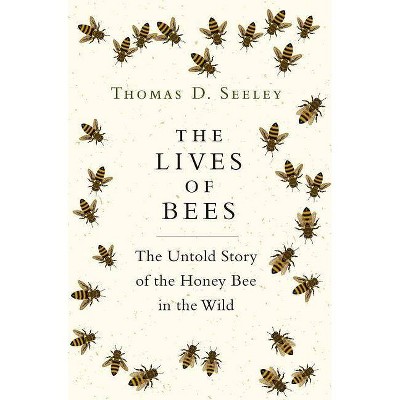
$20.35
MSRP $45.00
Buy 1, get 1 50% off select books
5 out of 5 stars with 1 ratings
Trending Non-Fiction

$15.68
Buy 1, get 1 50% off select books
4.8 out of 5 stars with 204 ratings

Highly rated
$19.31
was $20.98 New lower price
Buy 1, get 1 50% off select books
4 out of 5 stars with 67 ratings

$18.28
was $19.58 New lower price
Buy 1, get 1 50% off select books
4.7 out of 5 stars with 17 ratings

$4.59
MSRP $7.99
Buy 1, get 1 50% off select books
4.8 out of 5 stars with 124 ratings

$6.20
MSRP $10.95
Buy 1, get 1 50% off select books
4.8 out of 5 stars with 33 ratings

$7.09
MSRP $9.99
Buy 1, get 1 50% off select books
4.9 out of 5 stars with 46 ratings
